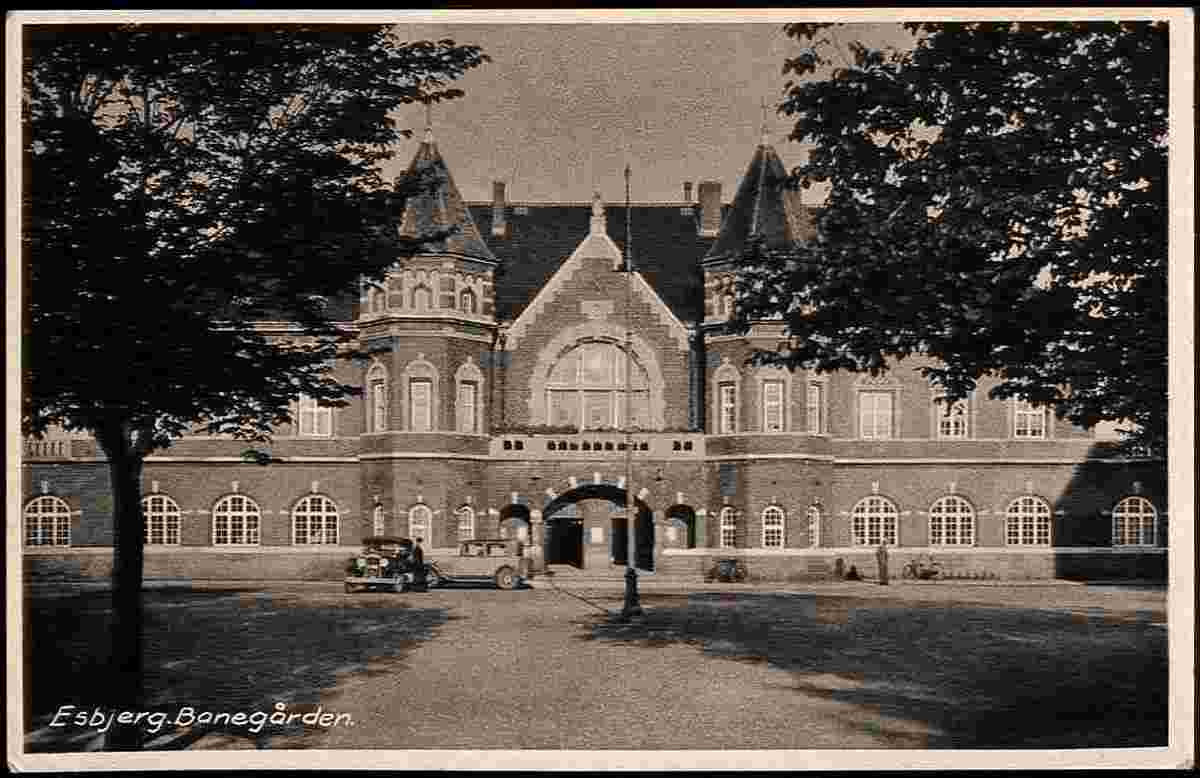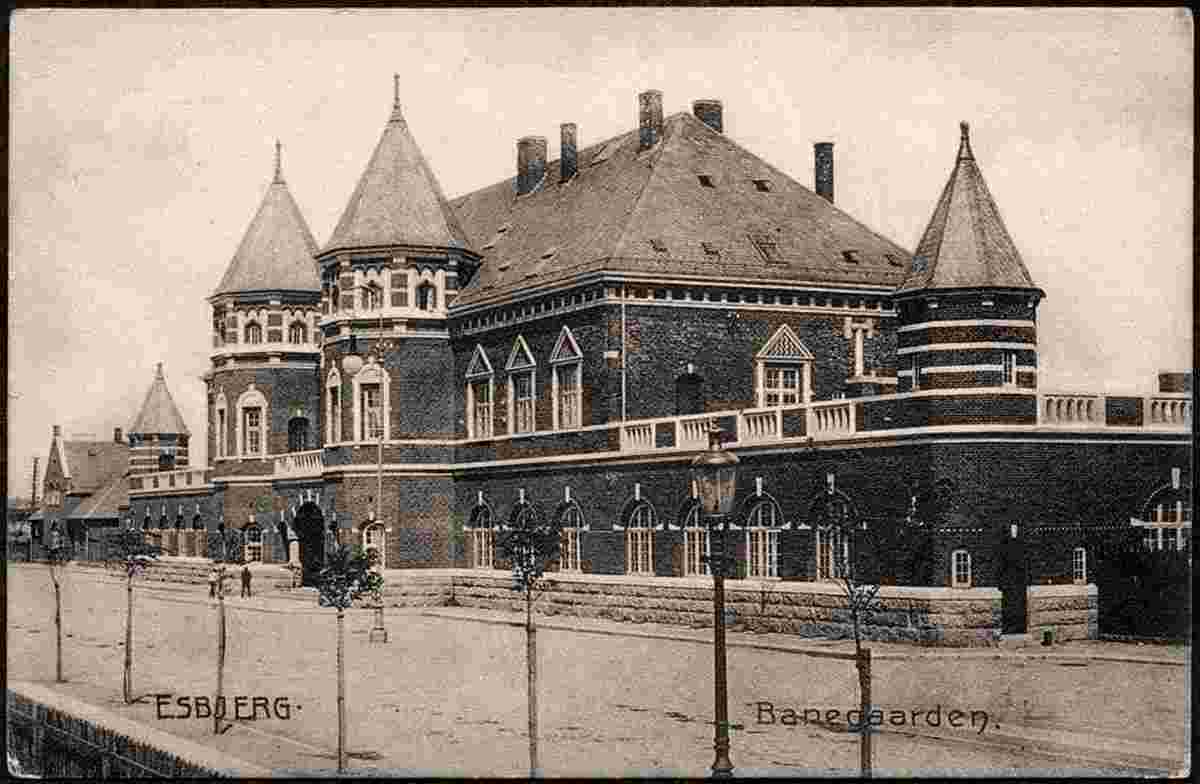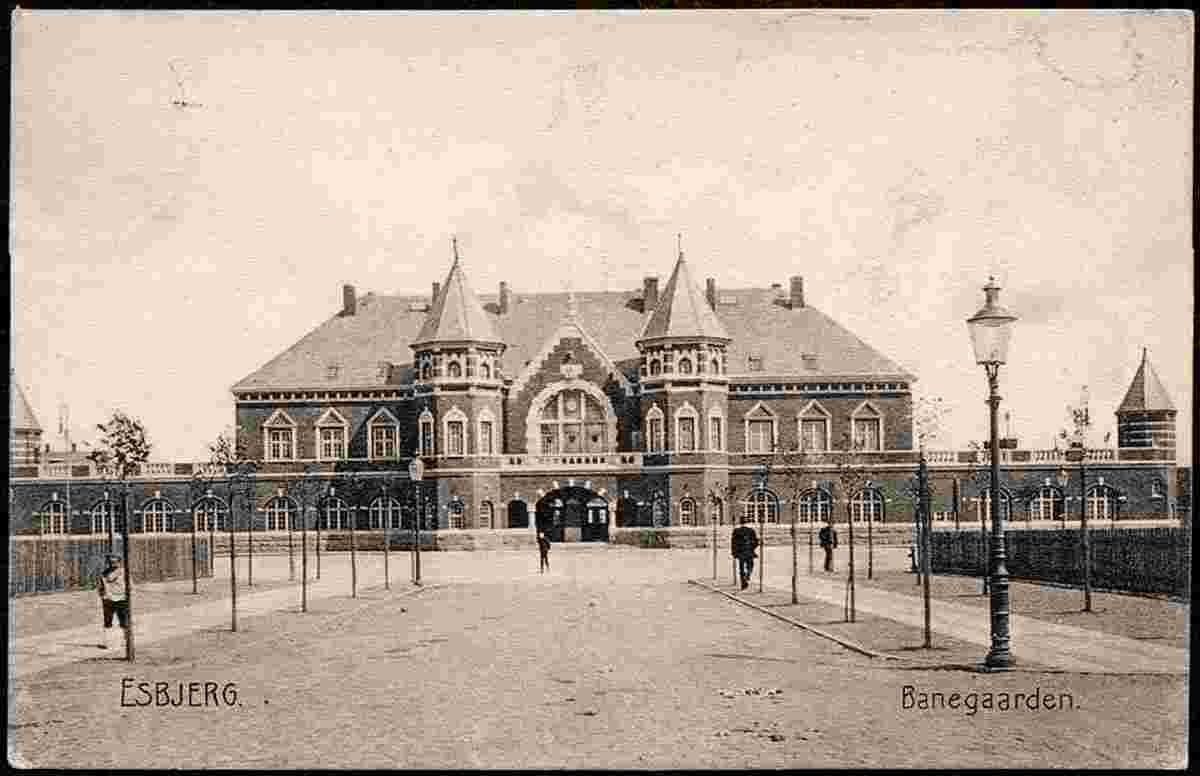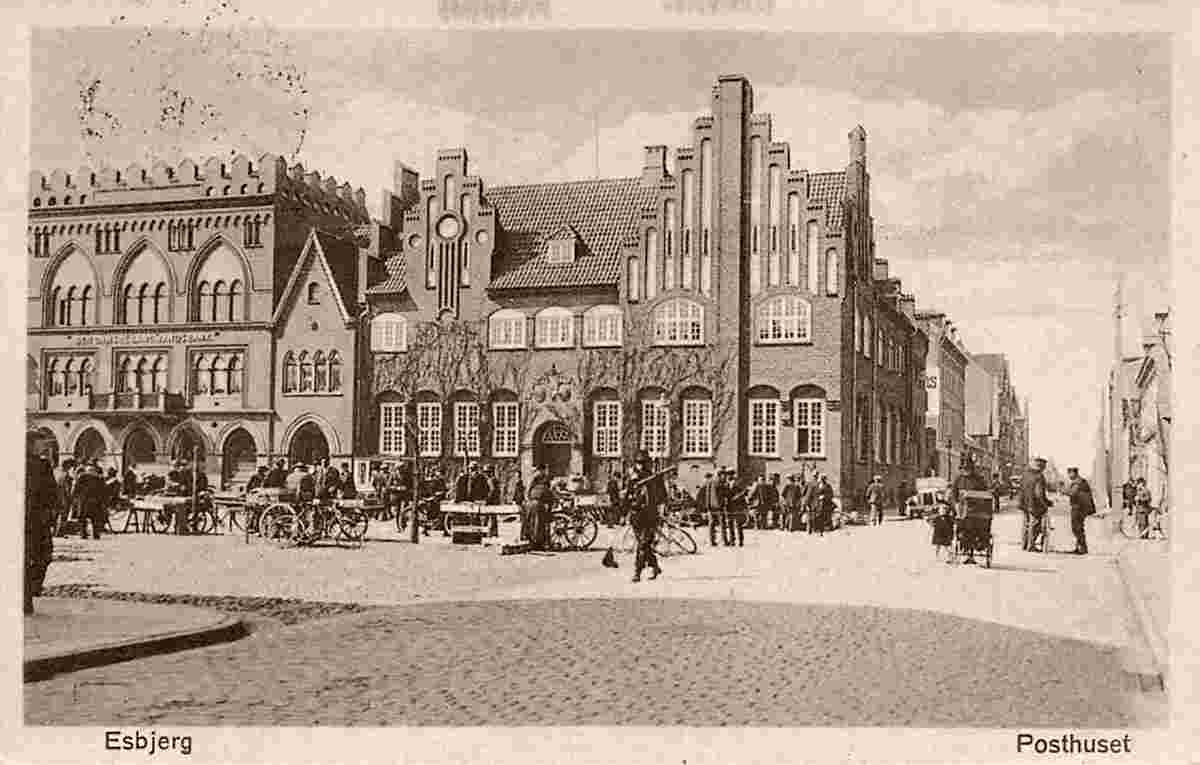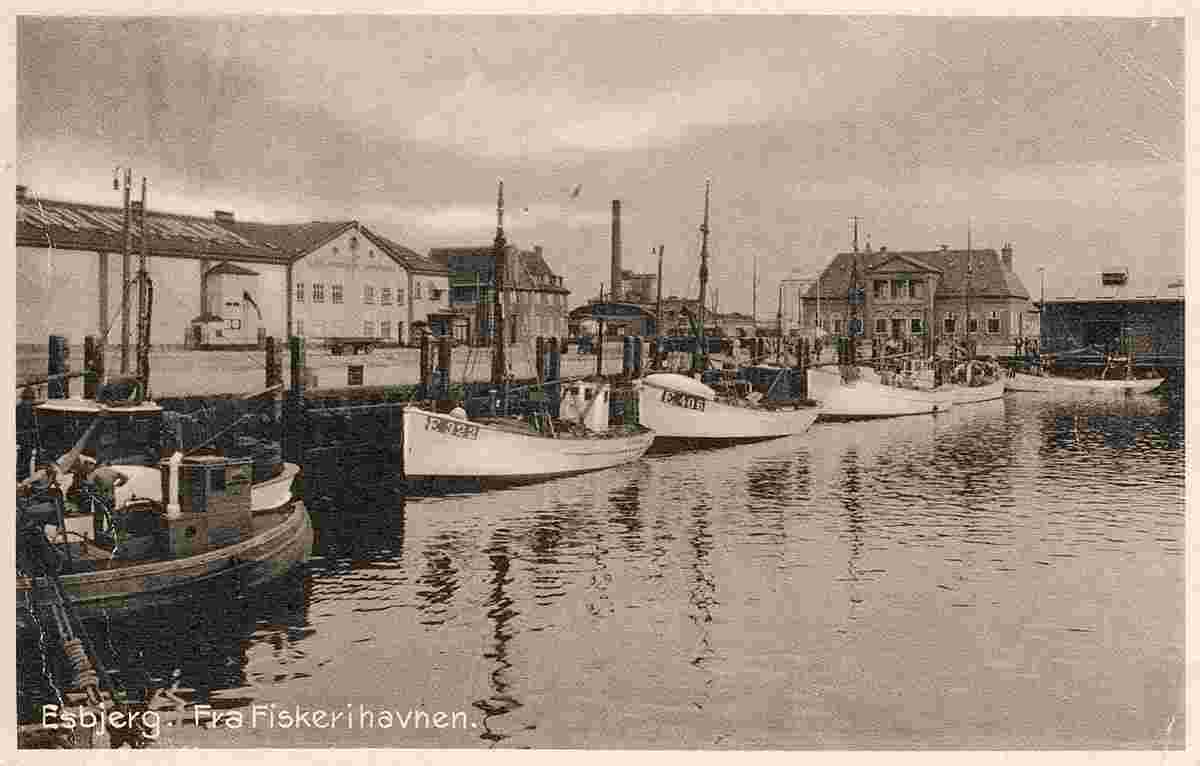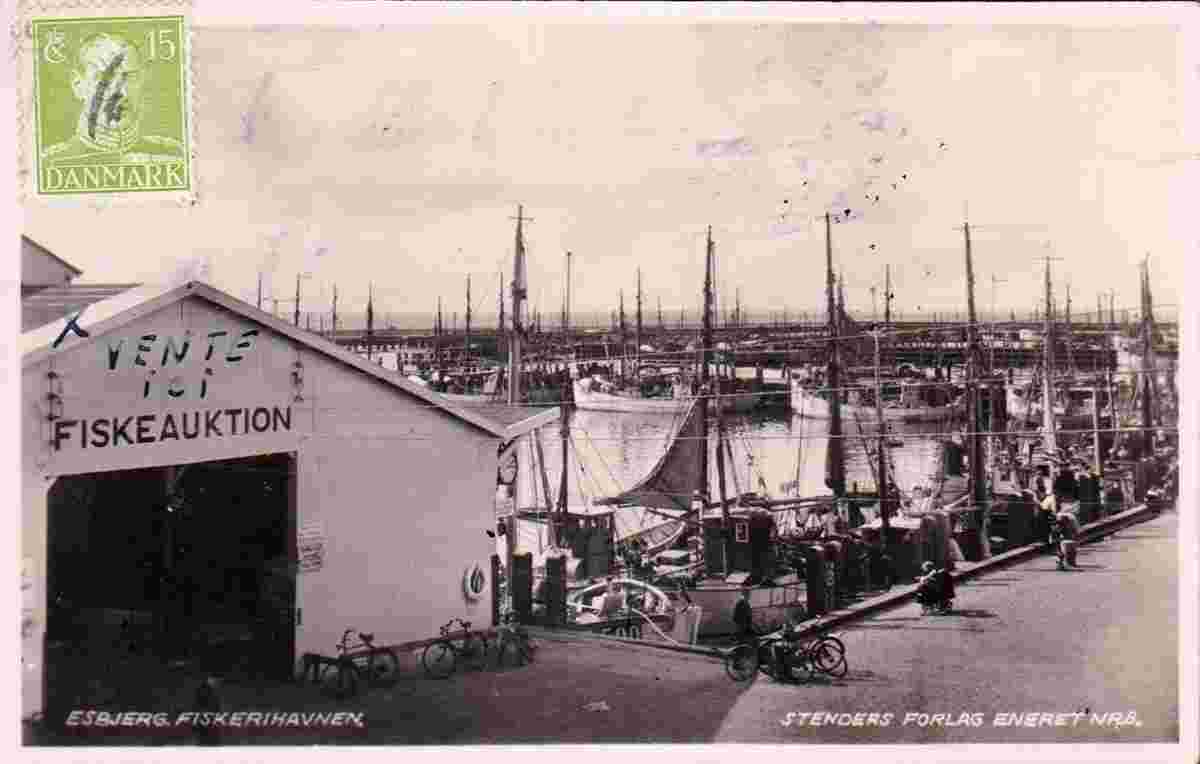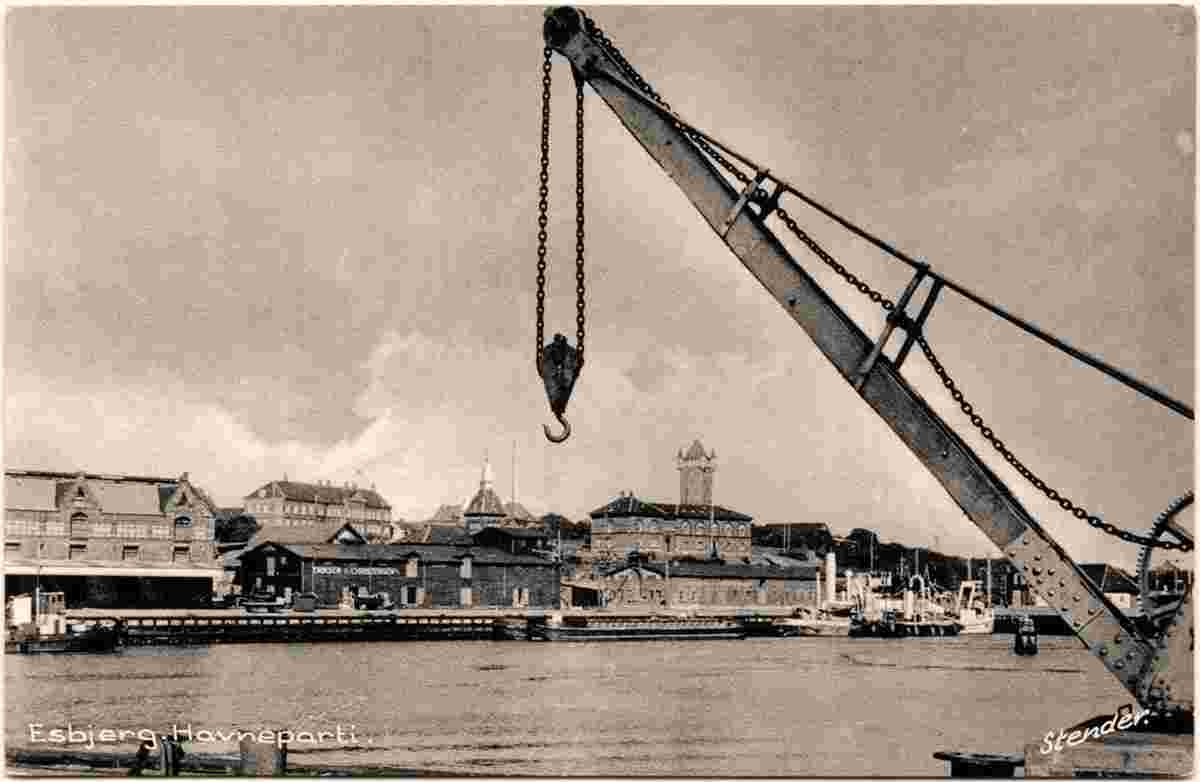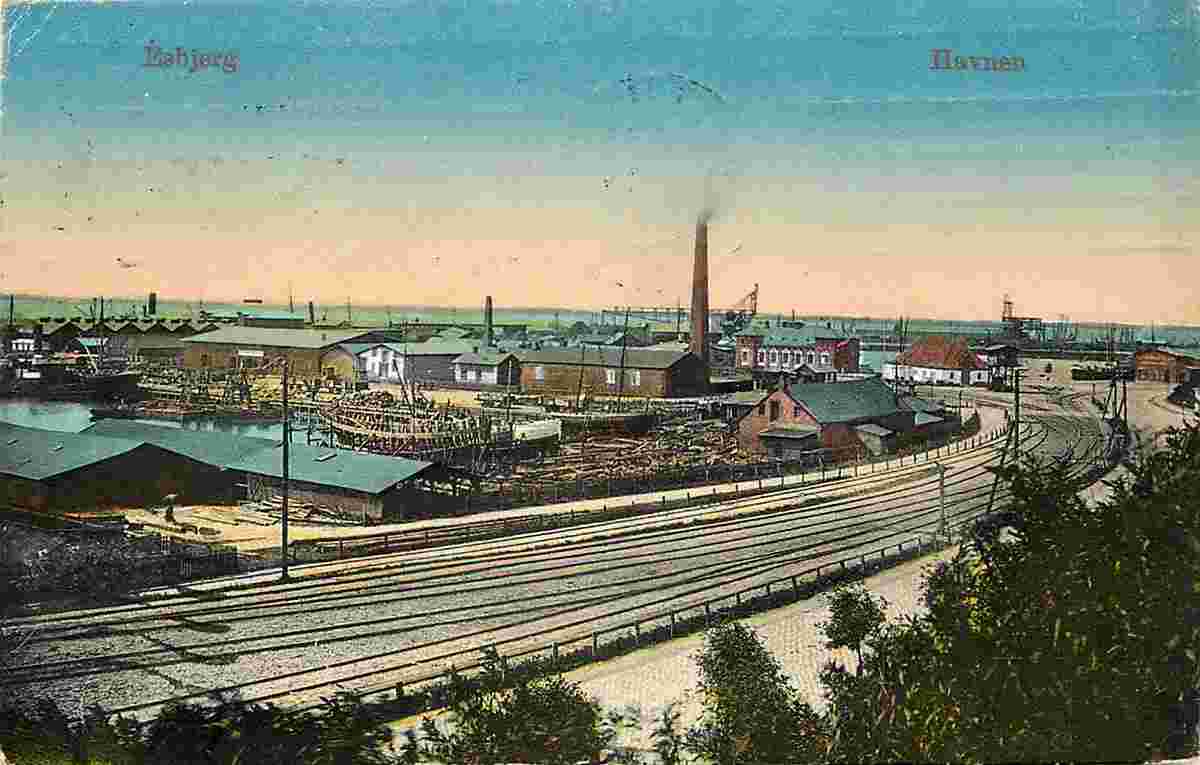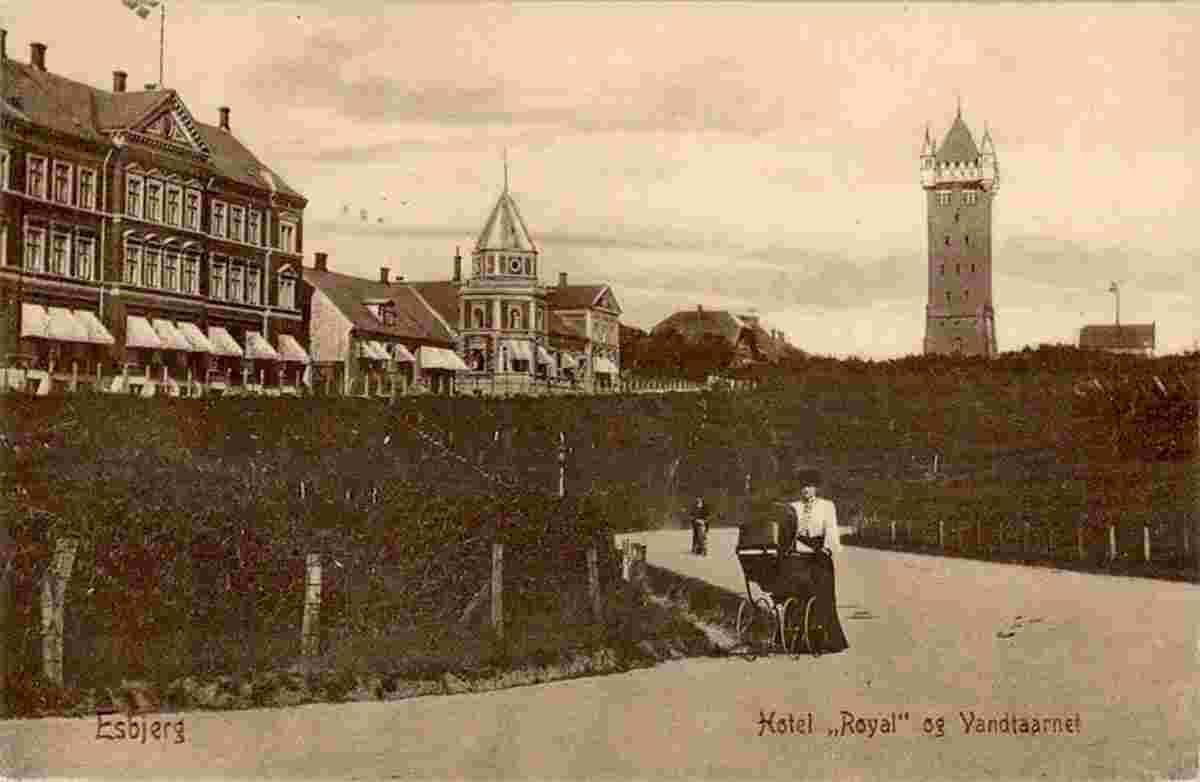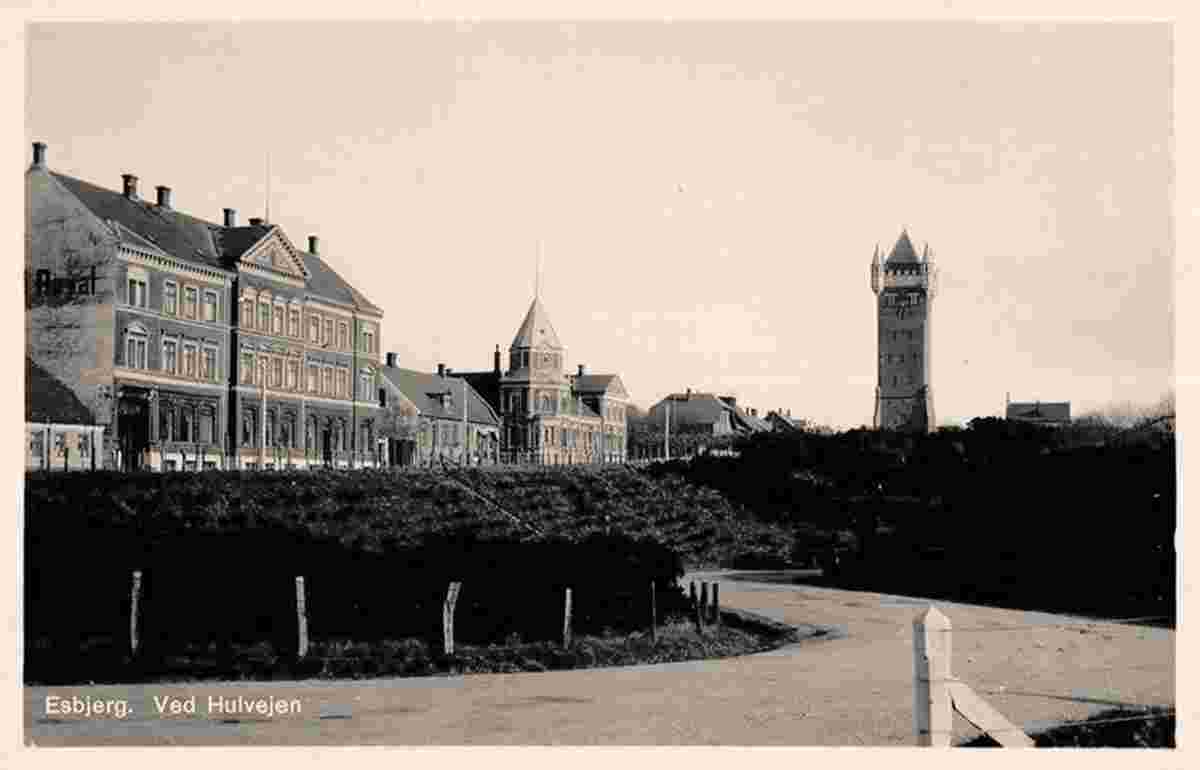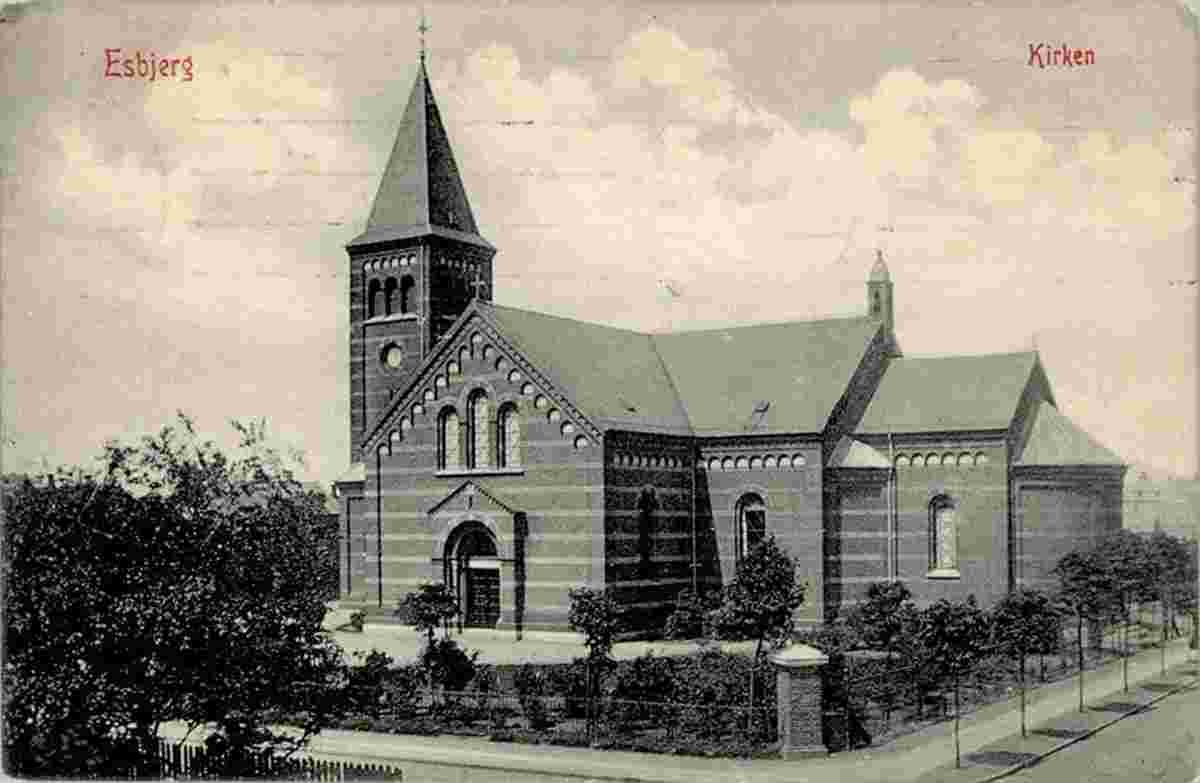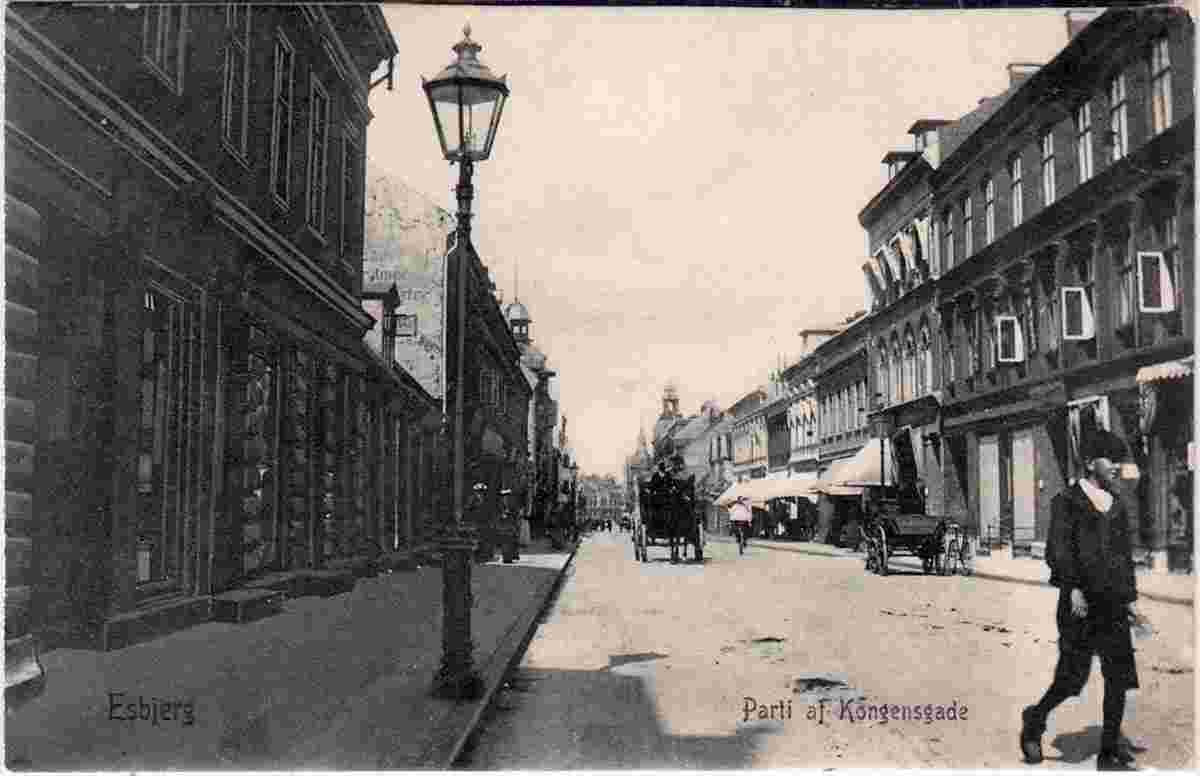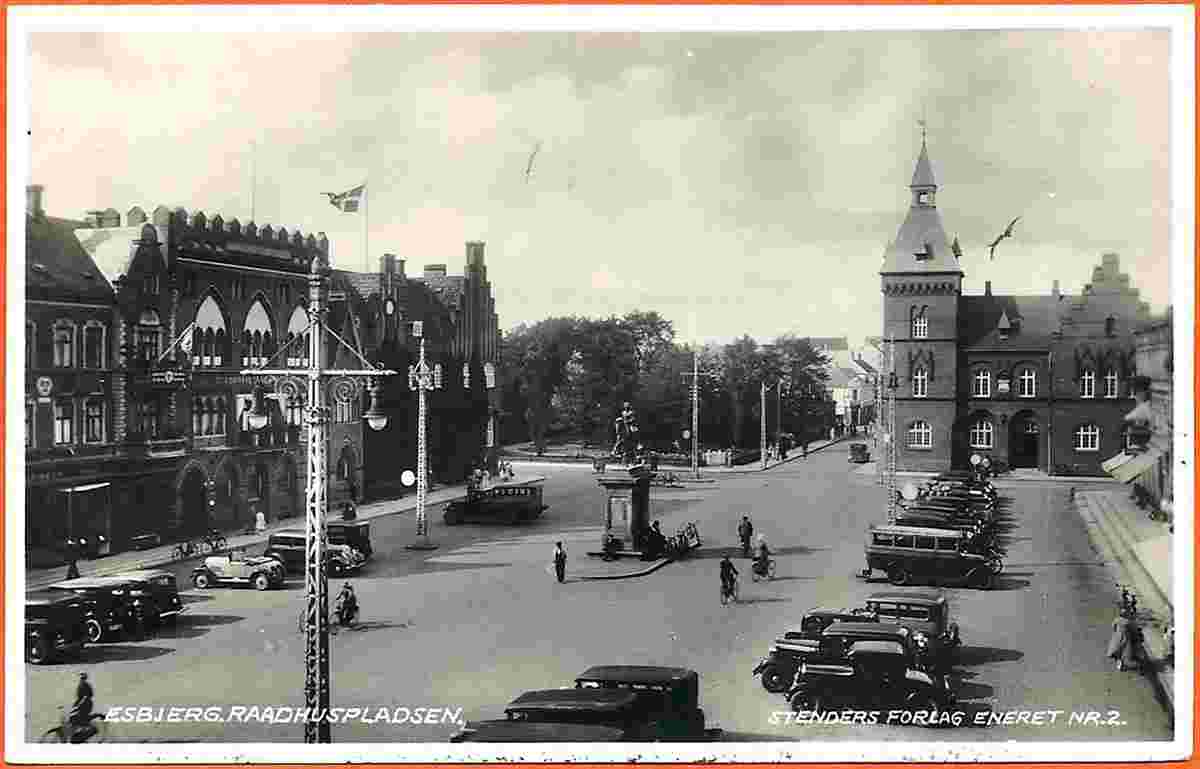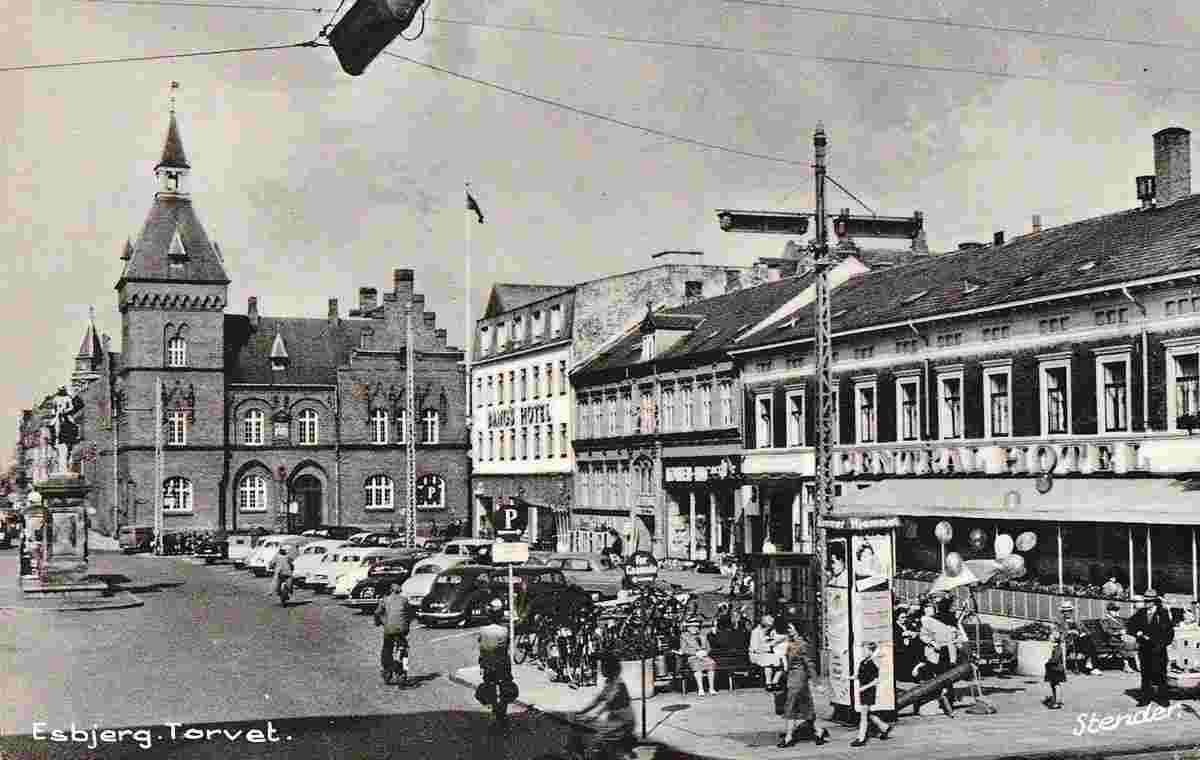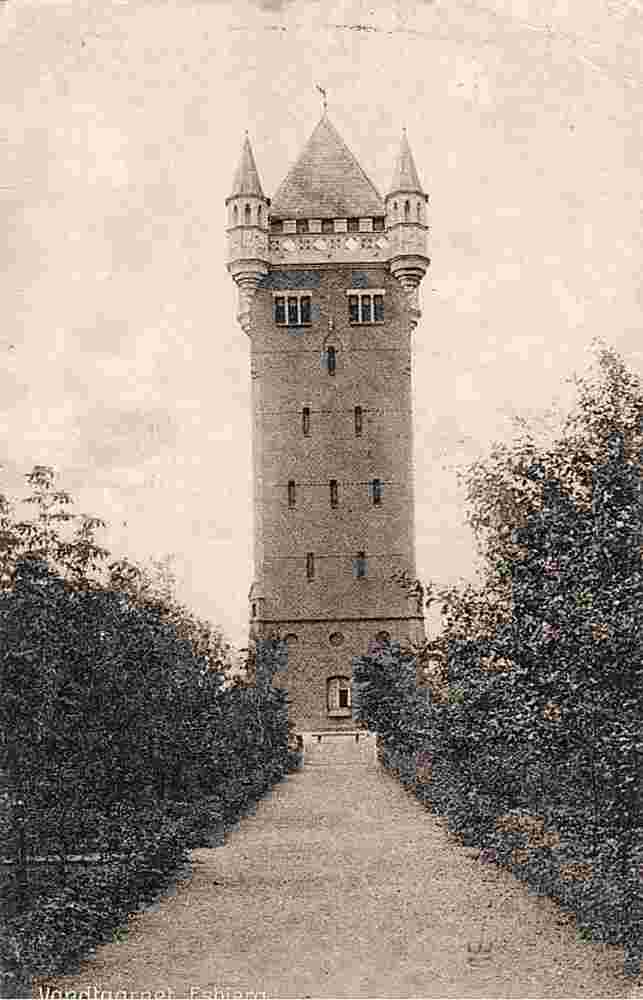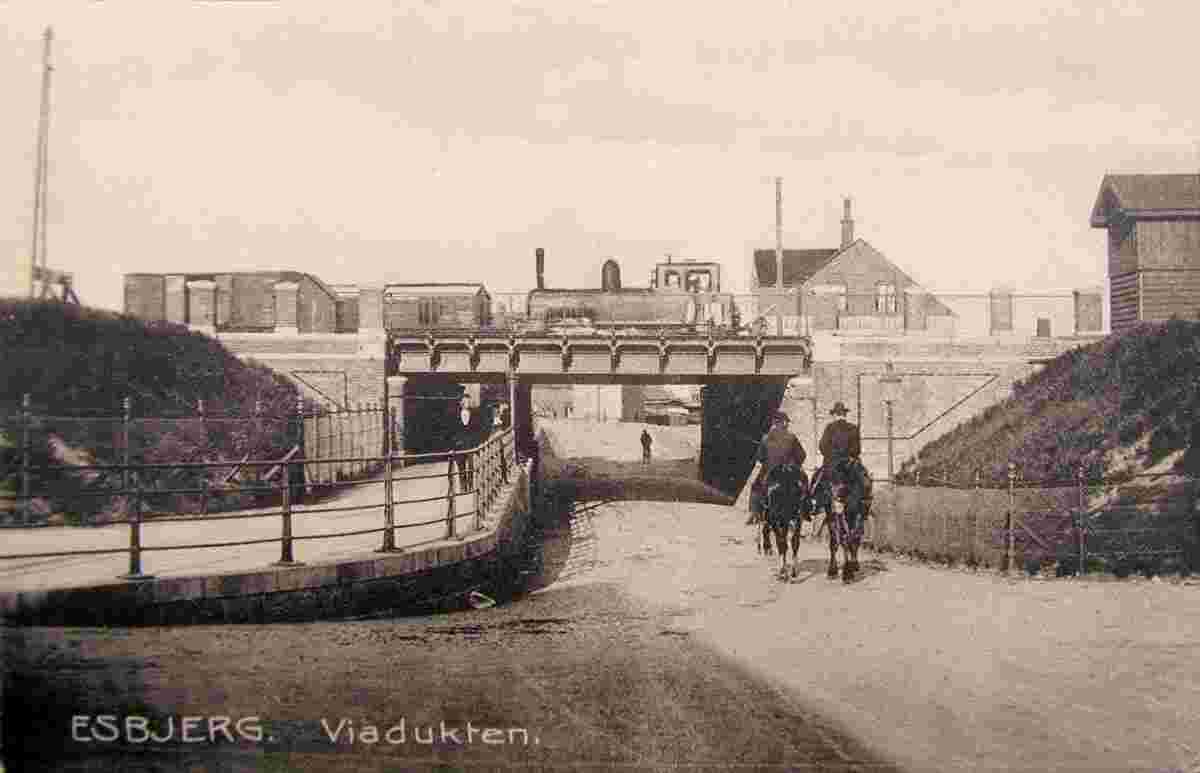Historical and old photos of Esbjerg, Southern Denmark
History and economyEsbjerg's oldest existing house, on the corner of Kongensgade, was built around 1660. The town itself was not established until 1868 when it was built as a replacement for the harbour in Altona, which had previously been Denmark's most important North Sea port but came under German control after the Second Schleswig War in 1864. At the time, Esbjerg consisted of only a few farms. Developed under royal decree from 1868 until 1874, the harbour was officially opened in 1874, with rail connections to Varde and to Fredericia, an important hub on the east coast of Jutland. Initial planning of the town was conducted by chartered surveyor H. Wilkens in 1870 with streets laid out in the form of a rectangular grid. The market square (Torvet) was positioned at the centre, midway between the harbour and the railway station. From only 400 inhabitants at the beginning of the 1870s, the town and its population grew rapidly, with 1529 residents mentioned in 1880, and 4,211 in 1890. In 1893, Esbjerg became a municipality in its own right (initially known as Esbjerg Ladeplads), receiving the status and privileges of a market town in 1899 and incorporating the parish of Jerne (east of the centre) in 1945. A number of institutions and facilities were soon established, including the courthouse and town hall (1891), the gas and waterworks (1896) and the power plant (1907). From the beginning of the 20th century, Esbjerg prospered not only as a fishing port but became one of the country's major export centres. Established in 1895 by nine local dairies, the butter-packaging factory, Dansk Andels Smørpakkeri, employed some 150 workers until 1920, packing and dispatching butter for the London market. It was later extended to include egg marketing under the name Dansk Andels Ægeksport. Ultimately, it handled produce from 140 dairies spread across the whole of Jutland. After the Second World War, the town developed several agricultural industries, especially meat processing and packaging with a plant employing over 300. The slaughterhouse and meat packaging facility, Esbjerg Andels-Slagteri, established in 1887, became Denmark's sixth largest by 1962. It later became part of Vestjyske Slagterier in 1986, and in 2001, it was acquired by Danish Crown. Once Denmark's principal fishing port, the Port of Esbjerg is still a driving force for the town's economy. While it has a long history of ferry services to England, the town is by no means a tourist destination. Lonely Planet remarked that "nobody comes to Esbjerg for a holiday, in fact, as with many industrial ports, most visitors rush through as quickly as possible". Esbjerg is the main town for Denmark's oil and offshore activities, with companies like Maersk, Ramboll, Stimwell Services, ABB, Schlumberger, COWI and Atkins all having offshore-related activities in the town. Halliburton has an office in Esbjerg. The port has served the Danish offshore industry since oil and gas were first extracted from the North Sea in the early 1970s. More recently, it has become a centre for shipping offshore wind turbines. In addition to handling 65 percent of all Danish wind turbines, which supply 3 gigawatts (4,000,000 hp) of offshore wind power, components have been shipped to various British wind farms. In order to cope with enormous future increases in Danish offshore wind power, 12 companies, including DONG Energy and Bluewater Energy Services are already planning the establishment of a Green Offshore Centre in Esbjerg. In connection with this, in June 2013, the port was significantly expanded with the opening of the Østhavn (East Harbour), covering an area of 650,000 m2 (7,000,000 sq ft). Historically, in addition to its success as a fishing port, Esbjerg established its position as one of the country's major export centres. Before World War II, there was a large butter factory, Dansk Andels Smørpakkeri, employing some 150 workers while after the war the town developed agricultural industries, especially for meat processing and packaging with a plant employing over 300. Latterly owned by Danish Crown and employing 500, the plant closed in May 2012. More recently, Esbjerg has grown into an important centre for education with campuses belonging to the University of Southern Denmark (1998) and Aalborg University (1995). The town holds an annual music festival spanning two weekends (nine days) in mid-August. It is focused around the central Torvet Square which hosts the main stage. The music includes everything from church concerts to opera and pop. Origin: en.wikipedia.org | |||||||||||||
 |
Old historical photos and images of Esbjerg, Denmark
Gamle historiske fotos og billeder af Esbjerg, Danmark |
| Main page • Countries of Europa • Cities of Denmark |
| Robinson Rd, CB 13862 Nassau, NP, The Bahamas |


